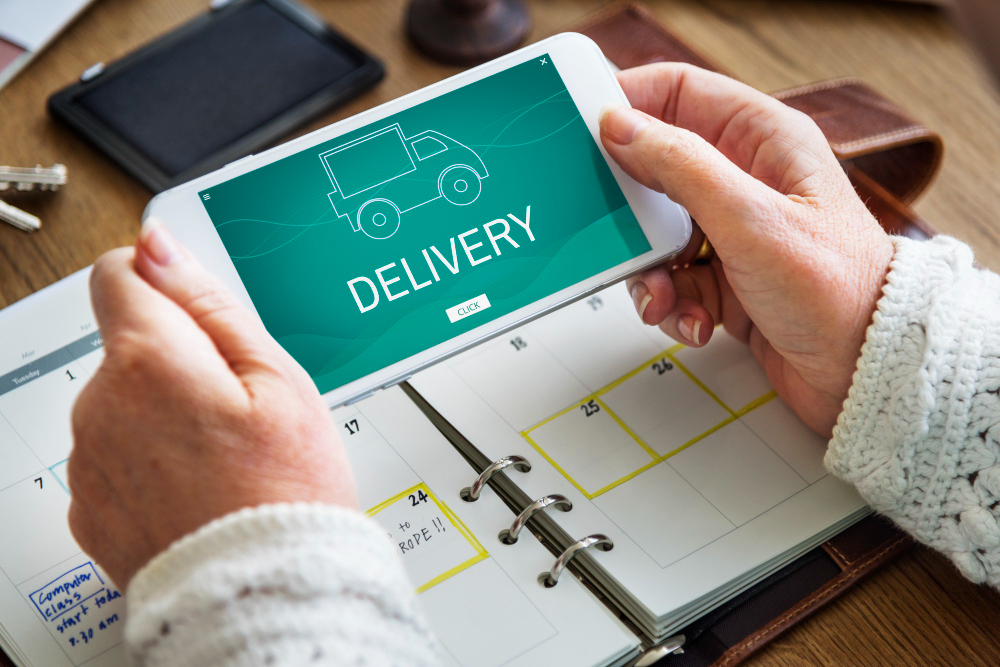The Right Choice of Delivery Management Software Boosts Customer Experience
- 1 10 Ways How the Right Choice of Delivery Management Software Elevates Customer Experience
- 1.1 Real-time Order Tracking
- 1.2 Efficient Route Planning
- 1.3 Effective Communication
- 1.4 Customer Self-Service
- 1.5 Analytics and Insights
- 1.6 Integration Capabilities
- 1.7 Scalability and Adaptability
- 1.8 Returns and Reverse Logistics
- 1.9 Extended Delivery Coverage
- 1.10 Partner Connectivity
- 2 How to Choose Delivery Management Software?
- 2.1 Scalability and Flexibility:
- 2.2 Delivery Features and Functionality:
- 2.3 On-demand delivery app development capabilities:
- 2.4 User-Friendliness:
- 2.5 Customer Support and Training:
- 2.6 Integration Capabilities:
- 2.7 Security and Reliability:
- 2.8 Pricing and Cost Considerations:
- 2.9 Reviews and Recommendations:
In today’s highly competitive business landscape, providing exceptional customer experience is vital to gaining a competitive edge. One critical aspect of delivering a superior customer experience is efficient and reliable order fulfillment and delivery. As online shopping soars in popularity, businesses must prioritize optimizing their delivery processes to meet customer expectations.
This is where delivery management software plays a crucial role. Companies can streamline their operations by choosing the right delivery management software, enhancing transparency, and boosting customer satisfaction.
Efficient delivery management is a complex task that involves various stages, from order processing to dispatching and tracking shipments. Without the right tools and systems, businesses can face delayed deliveries, poor customer communication, and ineffective route planning. These issues can have a detrimental impact on customer experience and tarnish a company’s reputation.
By investing in delivery management software, businesses can automate and streamline their delivery operations, ensuring a seamless and hassle-free experience for customers and internal teams.
10 Ways How the Right Choice of Delivery Management Software Elevates Customer Experience
Real-time Order Tracking
Delivery management software provides real-time tracking capabilities, allowing customers to monitor the progress of their orders from dispatch to delivery. Customers can easily access shipment updates with a user-friendly interface, including estimated delivery times, delivery driver information, and any delays. Real-time tracking instills confidence and trust in customers, as they can plan and manage their schedules accordingly, resulting in improved satisfaction.
Efficient Route Planning
Delivery management software helps optimize route planning for drivers, reducing delivery time and increasing efficiency. With advanced algorithms and mapping technologies, the software can identify the most optimal routes based on various factors such as traffic conditions, delivery windows, and driver availability. Efficient route planning reduces delays and ensures timely deliveries, improving customer experience.
Effective Communication
Effective communication is crucial in maintaining a positive customer experience. Delivery management software enables businesses to send automated notifications and updates to customers at various stages of the delivery process. From order confirmation to dispatch notifications and delivery confirmations, timely and accurate communication keeps customers informed and engaged. Customers appreciate transparency and proactive communication, which builds trust and enhances their overall experience.
Customer Self-Service
Many delivery management software solutions offer customer self-service options, allowing customers to control their deliveries. Customers can reschedule deliveries, provide specific delivery instructions, or even reroute packages to alternative locations. Empowering customers with self-service capabilities adds convenience and increases their satisfaction by giving them more control over the delivery process.
Analytics and Insights
Delivery management software provides valuable analytics and insights into delivery performance. Businesses can track key metrics such as delivery times, success rates, and customer feedback. By analyzing this data, companies can identify areas for improvement, make data-driven decisions, and optimize their delivery processes to meet customer expectations. The ability to continuously monitor and enhance delivery performance leads to improved customer satisfaction.
Integration Capabilities
Delivery management software can integrate with other business systems, such as e-commerce platforms, inventory management systems, and customer relationship management (CRM) tools. This integration enables seamless data flow between systems, eliminating manual data entry and reducing errors. The integration ensures accurate order information, inventory availability, and customer details, contributing to smooth order fulfillment and enhancing the overall customer experience.
Scalability and Adaptability
The proper delivery management software can grow and adapt to your business. As your business expands, the software should be able to handle increased order volumes, accommodate new delivery regions, and support additional features and functionalities. Scalable and adaptable software ensures that your delivery operations can keep pace with your business growth without compromising customer experience.
Returns and Reverse Logistics
An essential aspect of customer experience is managing returns and reverse logistics effectively. The proper delivery management software should provide seamless processes for handling returns, including generating return labels, tracking return shipments, and facilitating timely refunds or exchanges. By simplifying the returns process, businesses can improve customer satisfaction and loyalty.
Extended Delivery Coverage
Delivery management software allows you to extend your delivery coverage area. You can expand your reach to new regions or areas previously challenging to serve. The software helps optimize route planning and driver allocation, enabling you to handle deliveries in a broader geographical scope efficiently. Expanding your delivery coverage allows you to tap into new markets, reach more customers, and increase your business’s growth potential.
Partner Connectivity
Delivery management software often integrates with external partners such as third-party logistics (3PL) providers or couriers. This integration allows you to seamlessly collaborate with partners, expanding your delivery capabilities and reach. By leveraging partnerships, you can access additional delivery resources, tap into specialized services, and fulfill orders in locations that would have been challenging to manage independently.
How to Choose Delivery Management Software?
Choosing the right delivery management software is a crucial decision that can significantly impact your business’s operations and customer experience
Here are vital factors to consider when selecting delivery management software:
Scalability and Flexibility:
Consider the scalability and flexibility of the software. Ensure it can handle your delivery volume and scale as your business grows. Look for software to accommodate increasing order volumes, additional delivery locations, and evolving customer demands. Flexibility is also essential to adapt the software to your specific business processes and integrate it with existing systems.
Delivery Features and Functionality:
Assess the delivery features and functionality offered by the software. Consider essential capabilities such as real-time tracking, route optimization, automated notifications, and customer self-service options. Determine whether the software can handle delivery types, such as same-day, next-day, or scheduled deliveries. It should align with your business’s unique delivery requirements and provide the necessary tools to streamline operations.
On-demand delivery app development capabilities:
When choosing delivery management software, it’s essential to consider if the provider offers on demand delivery app development capabilities. In today’s fast-paced world, on-demand services have gained popularity, allowing businesses to cater to customers’ immediate needs.
An on-demand delivery app can provide customers a seamless and convenient way to request deliveries, track orders in real time, and receive shipment updates. By incorporating on-demand delivery app development into your delivery management software, you can stay ahead of the curve, offer a modern and user-friendly delivery experience, and cater to the growing demand for quick and efficient deliveries.
Integrating on-demand delivery app development can further enhance your business’s ability to provide exceptional customer experience and remain competitive in the ever-evolving delivery industry.
User-Friendliness:
User-friendliness is crucial for both your team and customers. The software should have an intuitive and easy-to-use interface for your employees to manage deliveries efficiently. Consider whether it offers a mobile application for drivers to access delivery details on the go. Also, assess the customer-facing features to ensure customers can easily track their orders, access delivery updates, and manage their preferences with minimal effort.
Customer Support and Training:
Evaluate the customer support and training provided by the software provider. Ensure they offer reliable customer support channels and are responsive to inquiries or technical issues. Look for resources such as user guides, tutorials, or training sessions to help your team effectively use the software. A supportive provider can ensure a smooth implementation process and ongoing assistance when needed.
Integration Capabilities:
Check if the delivery management software can integrate with your existing systems, such as e-commerce platforms, inventory management, or customer relationship management (CRM) software. The integration allows for seamless data flow, eliminating manual data entry and reducing errors. It ensures accurate order information, inventory synchronization, and customer details, enabling efficient order fulfillment and a cohesive customer experience.
Security and Reliability:
Delivery management software handles sensitive customer data and is critical to your business operations. Ensure the software provider has robust security measures to protect data and prevent unauthorized access. Look for a reputable provider with a track record of reliability and uptime, as system downtime can disrupt your delivery operations and negatively impact customer experience.
Pricing and Cost Considerations:
Evaluate the pricing structure of the software, considering both the upfront costs and ongoing fees. Some software providers charge based on factors such as the number of users, delivery volume, or specific features. Compare the pricing with your budget and assess the value offered by the software in terms of its features, functionality, and potential return on investment.
Reviews and Recommendations:
Research customer reviews and seek recommendations from businesses in your industry or network. Understand other businesses’ experiences with the software, including its pros and cons. Reviews and recommendations can provide valuable insights and help you make an informed decision.
Author’s bio: Anastasiia Lastovetska is a technology writer at MLSDev, a software development company that builds web & mobile app solutions from scratch. She researches the area of technology to create great content about app development, UX/UI design, tech & business consulting.

















